Bunbury Retaining Walls
We offer exceptional craftsmanship at affordable prices, making us your
go-to choice for retaining wall solutions in the South West.
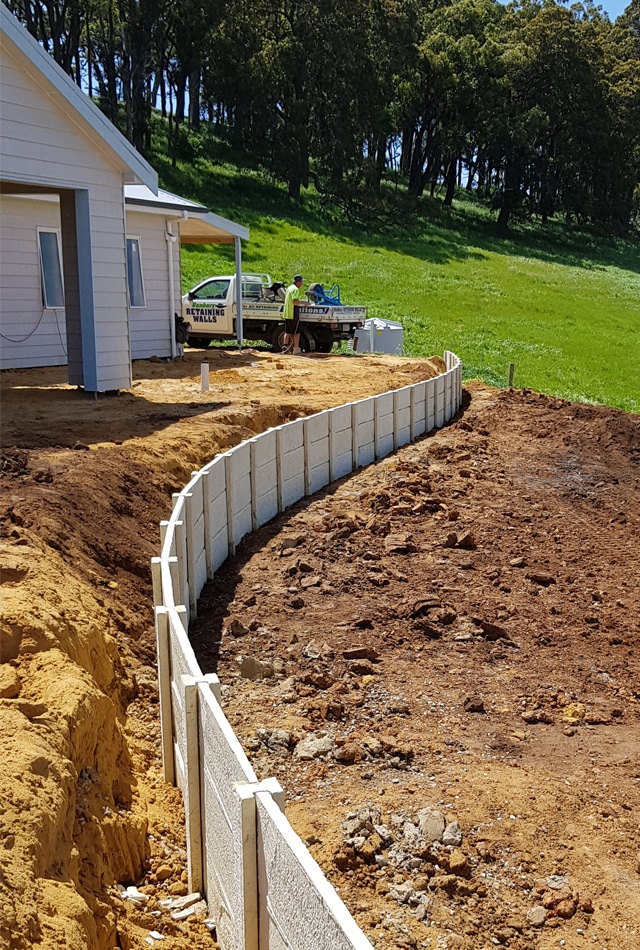
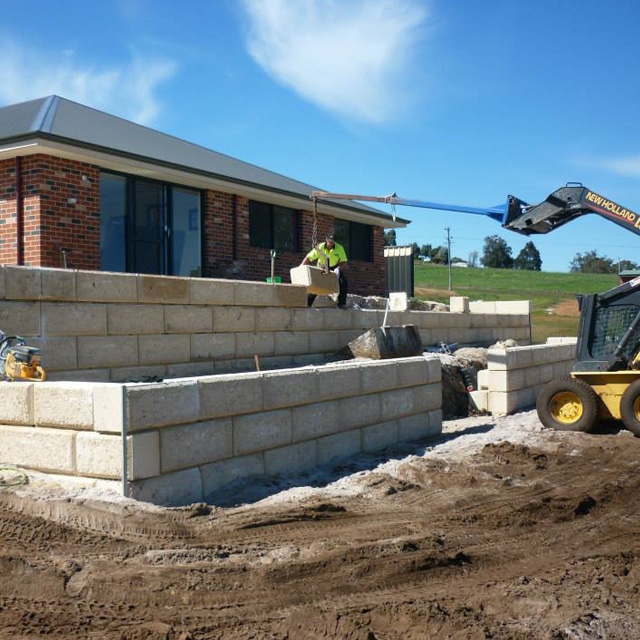
Retaining Walls
Obligation free on-site assessments avaliable
Bunbury Retaining Walls is the perfect solution for anyone looking to add structure and stability to their landscape. With a large range of various lengths and heights using fully engineered materials that have been shire approved, we also offer limestone block walls using 1 meter x 350 x 350 reconstituted product.
There is a retaining wall that can suit any project. They provide an aesthetically pleasing solution while also ensuring that your land remains secure from water damage or soil erosion.
- Retaining heights from 300mm up to 1.5 meters for precast concrete and upto 4 meters for limestone blocks.
- Attractive garden edging
- Terracing steep slopes
- Replacing termite infested sleepers
- Retaining where space is limited
Retaining Wall Components
Bunbury retaining walls components consist of concrete post and panels, all steel reinforced. The ‘H’ shaped posts are set into holes dug approximately 113cm apart. The depth of the holes must equal the height of the retaining wall required (max depth 1200mm). Walls up to 1.5m high can be constructed.
Equal pressures are then created above and below ground level (a cantilever effect). The posts are then aligned, levelled and anchored in a concrete footing. The panels are then inserted into and down the tracks of the posts. The bottom panels are supported by the footing around each post. Each panel interlocks and raises the height of the wall in 150mm increments.
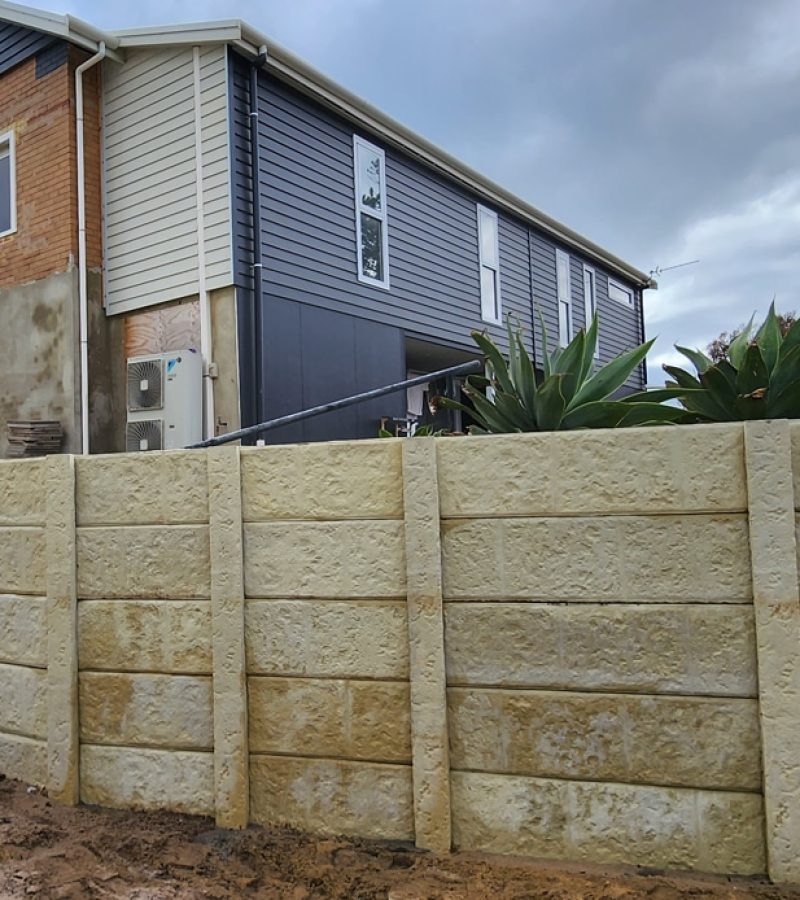
Our Retaining Materials
Residential and Commercial Retaining Wall Supplies
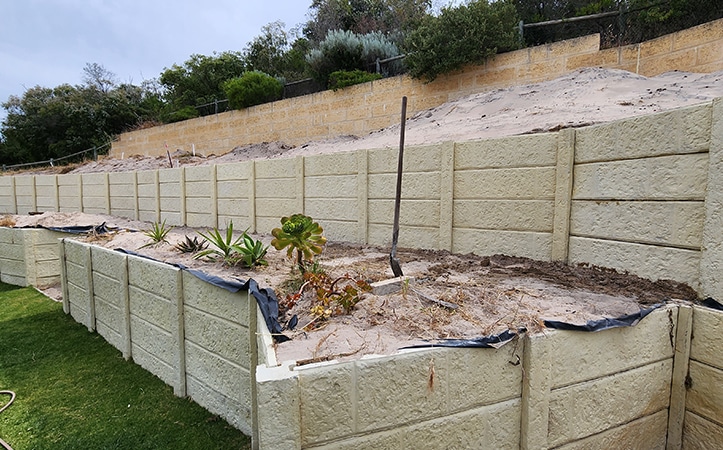
Precast Retaining Walls
Ideal for preventing soil from higher levels falling onto lower levels, panel and post retaining walls in are commonly used to safeguard land between two neighboring properties, prevent soil erosion, or free up more land for use.
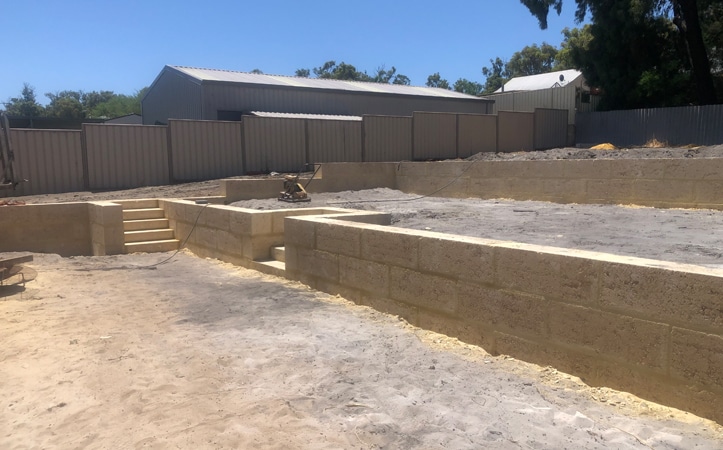
Limestone Retaining Walls
When looking to hold back a particularly heavy slope, segmental limestone retaining walls that interlock reconstituted limestone blocks to create an immensely solid vertical front. We only offer limestone retaining walls as a supply and install product (not for DIY use).
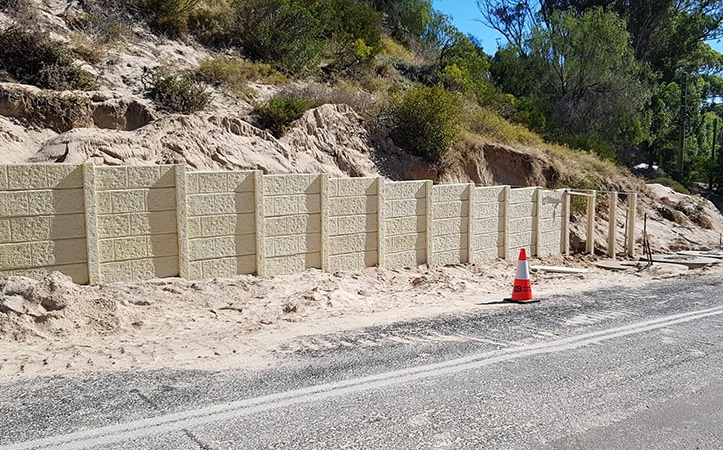
Earthworks For Retaining Walls
Bunbury Retaining Walls can assist with shire permits and earthworks when your walls have been purchase through us. Please note customers will need to supply a site plan, for more information please contact us directly.
DIY Retaining Walls
The great thing about a DIY retaining wall is that it’s a fairly straight forward project. If you’ve had experience with marking up and pouring concrete you’ll be on the right track to building your retaining wall.
Additionally, before building a retaining wall check with your local shire for any regulations that may apply to retaining walls in your area.
Hire Our Retaining Wall Team
As professional retaining wall installers, we take a number of critical factors into account while handling your project, such as; installing to an engineering standard, creating a strong foundation and ensure your walls are straight and correctly positioned.
High Quality Retaining Walls
With 25 years of experience, we’re the trusted retaining wall installers
Bunbury & the South West residents turn to for reliable and attractive solutions.
Safe
Shire approved and engineer designed for your security.
Quality
Maintenance free - will not fade or deteriorate over time.
Simple
Quick, clean and easy installation by either yourself or our professional teams.
Diverse
Available in natural cream, limestone or economical plain textures.
Versatile
Suitable for domestic or commercial retaining situations.

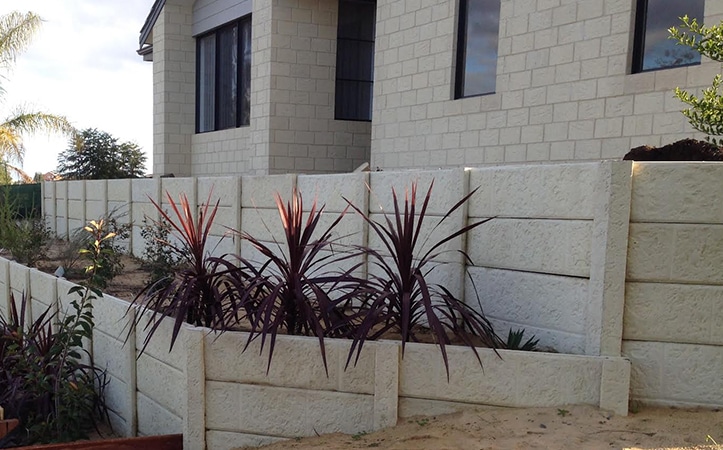
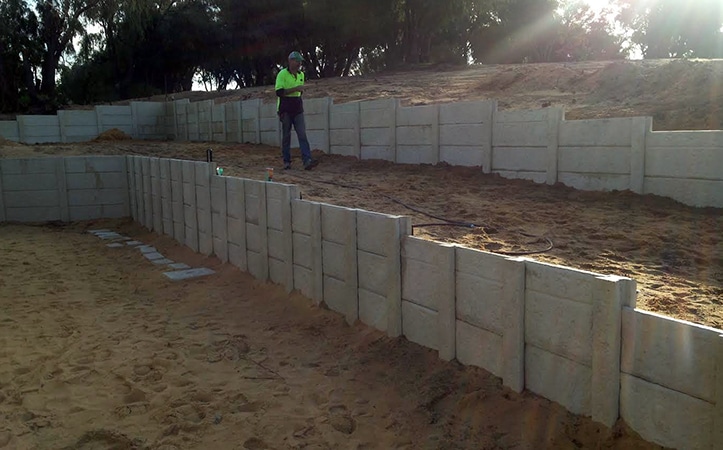
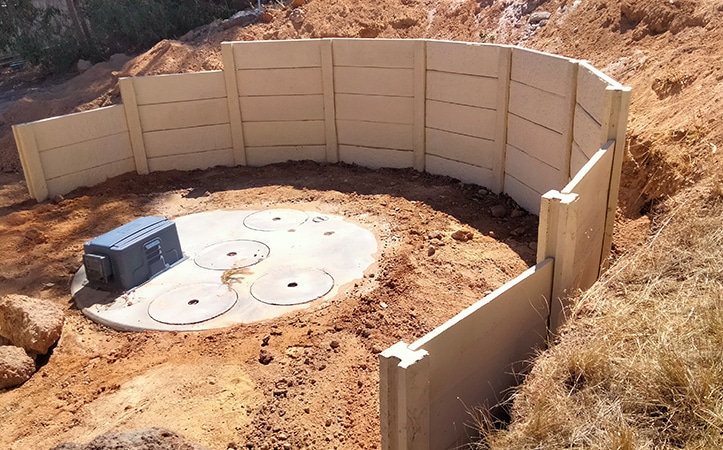
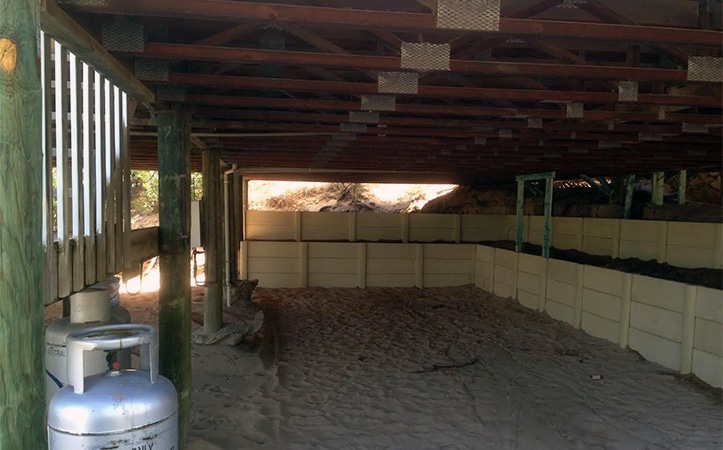
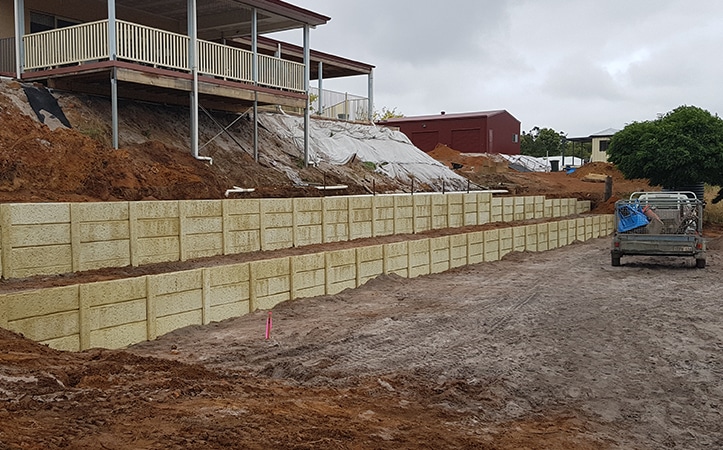
See some of
our previous projects
Whether you need a small or large retaining wall the team at Bunbury Retaining Walls can install your wall and make it a stress free process.
FAQs
If you have any retaining wall question feel free to reach out.
Benefits of building a retaining wall
A retaining wall is a structure that not only serves a functional purpose but can also be pleasing to the eye. They can improve the look of a garden, as well as provide many benefits.
The primary advantage of building a retaining wall is to hold back soil and create usable space in areas with steep slopes or hillsides. Retaining walls not only increase the value of your property but they hold back dirt and rocks, prevent erosion and landslides, allow residents to use their land for activities like gardening or adding an outdoor patio area.
Can You DIY A Retaining Wall?
Yes, you can DIY retaining walls. We recommend that you only attempt a retaining wall installation if you are confident in your experience and understanding of the project.
Is My Backyard Suitable For A Retaining Wall?
Certain areas can suffer from erosion or the ground being more unstable than most people would like. That does mean steps need to be taken to provide additional support, and a we can advise you on the possibility of using retaining walls.
are retaining walls a joint responsibility?
The owner who alters the natural lie of the land is responsible to provide a retaining wall. However, where both property owners alter the levels, they would be jointly responsible.
We recommend contacting your local shire for accurate confirmation.
why do retaining walls fail?
The primary reason is the wall has not been installed to the engineers detail. In some soil types like clay for example, drainage is required behind the wall at the base and if not installed it can cause issues.
How to install a retaining wall?
The following direction describe the stages of a common method of installation
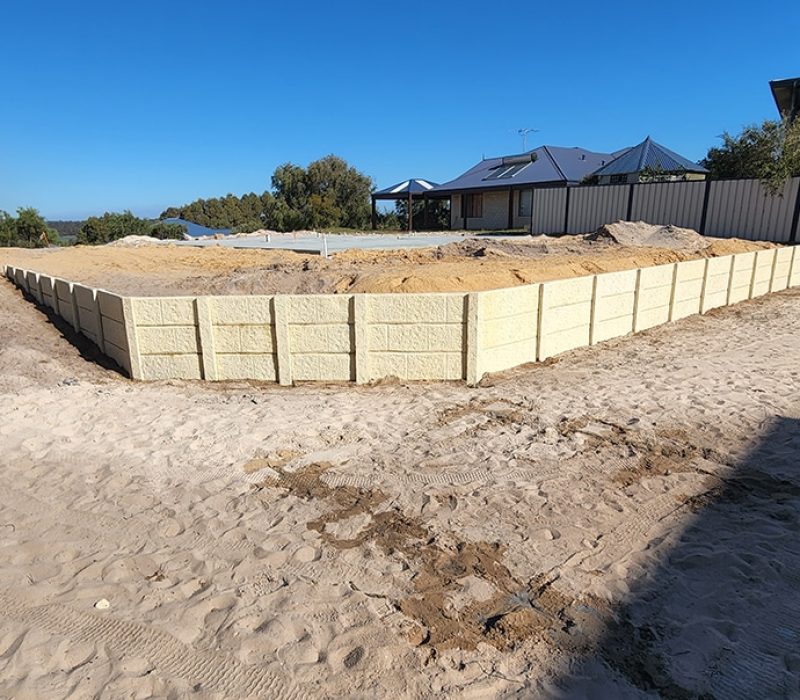
Builders/Owners should check with their local councils for the regulations governing retaining walls and obtain a licence when required.
Retaining walls must be constructed according to engineering specifications!
Note: 1.35m and 1.50m walls require backing panels
Height Of Wall
- 0.30m
- 0.45m
- 0.60m
- 0.75m
- 0.90m
- 1.05m
- 1.20m
- 1.35m
- 1.50m
Post Length
- 0.6m
- 0.9m
- 1.2m
- 1.5m
- 1.8m
- 2.1m
- 2.4m
- 2.4m
- 2.7m
Hole Depth
- 0.30m
- 0.45m
- 0.60m
- 0.75m
- 0.90m
- 1.05m
- 1.20m
- 1.35m
- 1.20m
Footing Diameter
- 0.35m
- 0.35m
- 0.35m
- 0.35m
- 0.35m
- 0.45m
- 0.45m
- 0.45m
- 0.45m
Builders/Owners should check with their local councils for the regulations governing retaining walls and obtain a licence when required.
- 1) Set up a string line between two stakes positioned at each end of the required wall.
- 2) Dig the first two post holes to the depth and diameter indicated above, with centres 1.13m apart. (It is better to dig the holes too deep and add more sand than to dig too shallow and have to lift the post out to deepen the hole).
- 3) Place a post in the first hole, ensure it is at the correct height, and add the concrete footing. Check the post is vertical with a slight tilt towards the rear, as described in step 7. When the first post is positioned correctly adjust the string, using a string level, so that the height above the ground indicates the top of the wall and that it is aligned along the front and rear face of the wall.
- 4) Dig two or three more post holes as in step 2, and place the posts in the hole with the correct separation. Some installers insert the bottom panel at this stage, but the use of a measuring jig is generally better.
- 5) Add concrete for footings. One part cement to four parts sand is adequate for walls up to 0.90m high. higher walls require aggregate (blue metal) for stronger footings.
- 6) Lean the post slightly (2°) towards the load side for increased effectiveness, and ensure that the posts are in a line and that the tops of the posts are at the correct level.
- 7) Install the panels, making sure the top panels are flush with the top of each post. Brush the top of each panel to prevent particles of sand or grit from creating a gap between the panels. For a better finish insert thin wedges at the rear of each panel to force them forward before backfilling.
- 8) An effective method, particularly if intending to pave afterwards, is to keep the tops of footings below ground level and a brick to support each panel. This allows for easier adjustment of the panel heights and gives room for paving later.
- 9) Continue and complete the wall. This can be done in a number of stages if more convenient.
- 10) Where the wall is used to retain a garden bed, the use of plastic sheeting between the soil and the wall will help to prevent seepage of water and assist in the retention of moisture in the soil.
Contact Us
FIll out the form below and we will cantact you as soon as possible.
